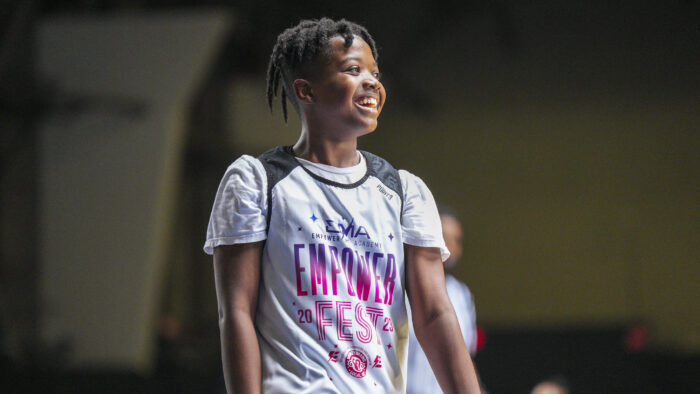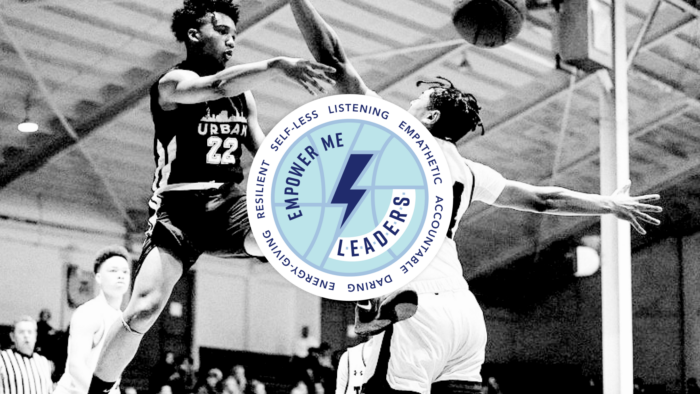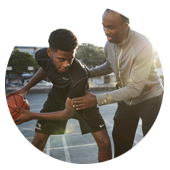“Our Rubber Band Method”
Our students’ harmful habits will not change on their own; we have to help them. The first requirement is to understand that students can’t just snap out of it. That’s not their fault. It’s the way society conditions us to experience our emotions. Just because you can’t make it all go away doesn’t mean you can’t do something about it. There’s a fundamental need to become aware of what we are thinking and saying on a regular basis: this is called emotional intelligence. Student-athletes usually come to us with the habit of putting themselves down. They also come with the habit of telling themselves that they are not good enough. Often, they have self-defeating self-talk like: “I am too short”, “I am not fast enough”, or “I can’t shoot.” Of course, this can be because the world is such a toxic and negative place. In order to be successful, they have to quit this ritual. Negative self-talk is a self-fulfilling prophecy. EMA will help our student-athletes accomplish overcoming negativity.
Our students’ harmful habits will not change on their own; we have to help them
How does EMA help our students eliminate self-talk? How do we change their automatic behavior of putting themselves down? Honestly, it’s not that simple. Even I am still working on it. Just choosing to cease this reaction is not nearly enough. We all require a way to break our negative pattern.
And that’s where our “Rubber Band Method” comes into play. It is used as a reminder, not a replacement, for any negative self-talk or reactions. A reminder to perform: a different action, a different understanding, and a new body response.
This is how the Rubber Band Method works! First, let’s use an example of a student who always puts themselves down. They aspire to change that behavior but find themselves time after time falling back into that habit because it is so automatic. The secret is to catch yourself in the behavior and immediately choose something else: snapping a rubber band serves as a reminder to avoid the negativity!
This method is to be used for when they put themselves down and anything else that is self-defeating. They have to deliberately decide to replace the negative self-talk with a positive statement or body response. The rubber band is used as a pattern breaker that gets our students’ attention and reminds them that they must select a positive behavior. It acts to snap you back into the present moment so you can consciously choose a new action until it becomes a habit.
Steps And Directions For Using A Rubber Band To Change A Negative Behavior:
- Find a rubber band that fits loosely around your wrist.
- Decide on the thoughts, words, behaviors or actions you want to change.
- Decide what positive thoughts, words, behaviors, or actions you are going to replace for the negative response.
- Every time you find yourself engaging in the behavior you want to change, snap the rubber band, remind yourself that you have chosen a new practice, and immediately replace the old behavior with the new behavior or positive self-talk.
Here are some of the few examples of when our students snap their rubber bands (ways to initiate The Rubber Band Method).
- Yelling at a teammate.
- Slapping their hands in frustration.
- Showing poor body language.
- Not giving encouragement.
- Not listening while a coach is talking to someone else.
Remember, our students do not use the Rubber Band Method when they make mistakes!
We believe that mistakes are part of the development process: mistakes are feedback. It allows our students to self-learn and self-coach. However, they use this method of snapping their rubber band only to be snapped out of their self-defeating, automatic habits of negative reactions, responses, and thoughts.





 Gift Now
Gift Now